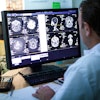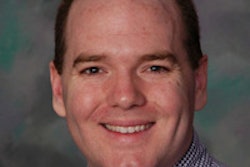
More than three-quarters of radiologists are not meeting requirements of the Medicare Physician Quality Reporting System (PQRS), according to a study to be published in the February issue of the Journal of the American College of Radiology. The shortfall could expose radiologists to penalties starting in 2015.
Under a worst-case scenario, by 2016 there could be penalties of more than $2,500 per radiologist -- or more than $100 million for the entire profession -- as the U.S. Centers for Medicare and Medicaid Services (CMS) shifts the PQRS program from a system of rewarding physicians for quality reporting to one of penalizing them for not complying.
That's the bad news. The good news is that more radiologists are qualifying for the rules than healthcare providers in other specialties, according to Dr. Richard Duszak Jr., CEO of the American College of Radiology's (ACR) Harvey L. Neiman Health Policy Institute, and colleagues.
Changing physician behavior
The PQRS program is part of the federal government's desire to shift healthcare from a fee-for-service model to one driven by patient outcomes and quality. As such, it offers financial incentives to physicians for meeting specific documentation and reporting requirements. CMS introduced the program in 2007 as the Physician Quality Reporting Initiative, and it was later made permanent under President Barack Obama's healthcare reform plan, the Patient Protection and Affordable Care Act of 2010.
 Dr. Richard Duszak Jr.
Dr. Richard Duszak Jr.
For the study, Duszak's team analyzed PQRS program data from 2007 to 2010 and found that nearly 24% of eligible radiologists qualified for PQRS incentives in 2010 -- a more than fivefold increase (JACR, December 28, 2012, article in press). But it's time for more action: 2013 performance measures will be used as the basis for penalties for 2015.
"The [PQRS] train has left the station and is moving forward," Duszak told AuntMinnie.com. "While the program's metrics may or may not be meaningful in physicians' medical opinion, they will have a meaningful impact on their paychecks."
To get doctors to sign on to the program, CMS has used a carrot-and-stick approach. Initially, CMS offered the carrot: Bonuses began at 2% of total individual physician Medicare payments in 2009 and 2010, but that has now dropped to 0.5%, a rate that will be maintained through 2014.
In 2015, the bonuses will be replaced by the stick -- i.e., penalties of 1.5% of physician payments for those who do not fully comply; these are scheduled to rise to 2% in 2016, according to Duszak and colleagues.
The PQRS program allows two types of physician reporting. The first is claims-based, under which measures are tied to reimbursement claims for CPT codes, and data submission is the responsibility of the individual physician or group practice as part of its billing operations.
The second is registry reporting, under which individual physicians or group practices submit quality data electronically to a CMS-qualified PQRS registry vendor, which then sends information to CMS on behalf of that physician or practice, Duszak's group wrote.
The researchers found that participating radiologists who used registry reporting did better in securing payments than those who used claims-based reporting -- but only 7% of radiologists went this route.
"Practices that used a registry service were more than four times as successful [at receiving bonuses] than those that didn't," Duszak told AuntMinnie.com.
On the bandwagon?
What exactly were the bonus amounts? The mean 2010 radiology PQRS incentive bonus ranged widely, from $2,811.39 for diagnostic radiologists to $12,704.38 for radiation oncologists, Duszak's team found. Mean and median amounts for all four radiology subspecialties were as follows:
- Diagnostic radiology: $2,811.39 (mean) and $2,104.63 (median)
- Interventional radiology: $3,973.06 (mean) and $2,904.51 (median)
- Nuclear medicine: $3,224.12 (mean) and $1,504.15 (median)
- Radiation oncology: $12,704.38 (mean) and $4,382.23 (median)
All other physicians and other healthcare professionals had mean 2010 PQRS incentive bonus amounts of $2,157.36 and median bonus amounts of $1,026.11.
Three factors contributed to the annual increases in incentive qualification, according to Duszak and colleagues: The number of program-eligible radiologists, the participation rate of eligible radiologists, and the successful qualification rate of those participating all increased.
No. of eligible, participating, and incentive-qualifying radiologists in PQRS program
|
And although only 23.7% of eligible radiologists qualified for PQRS incentives in 2010, radiologists overall fared more favorably than nonradiologists in the program, the group wrote. The only nonradiology specialties that had higher participation rates were emergency medicine (56.4%), pathology (43.4%), thoracic and cardiac surgery (31.4%), anesthesiology (30.6%), cardiology (28.6%), and ophthalmology (27.6%).
Are rads getting paid?
Getting paid sounds great, but how many radiologists made every effort to comply and still didn't receive bonuses? It's unclear, according to Duszak. Reports by both radiologists and nonradiologists have suggested that the program's administrative costs and the work it requires of physicians offset any positive benefit of incentive payments. And some practices haven't received bonuses despite early and aggressive efforts to comply.
"There are lots of anecdotes about people who dotted every 'i' and crossed every 't' and still didn't get their bonus," Duszak told AuntMinnie.com. "The lack of transparency [from CMS] is a concern."
The fact that other specialties have been much more successful in qualifying for incentives should give radiologists hope that physician and practice behavioral changes may be fruitful, Duszak's team wrote. Better rates of PQRS qualification can happen as the number of eligible radiologists increases, as the participation rates of eligible radiologists pick up, and as qualification rates of participating radiologists improve.
The group suggested that radiologists take the following steps:
- Participate in ongoing PQRS education and performance evaluations (both CMS and the American College of Radiology have made material available for review).
- Put into place automated reporting tools.
- Work with business managers and billing companies to make sure that report documentation compliance translates into actual PQRS bonuses.
- Explore the use of registry vendors.
"We believe that most opportunities for further radiologist PQRS successes exist at the participation and qualification levels, and thus we advise concentrating efforts accordingly," Duszak and colleagues concluded. "Success with PQRS will also require an understanding of the scientific data that underlie the measures and a willingness to view them as potential practice improvement tools within focused domains of clinical care."




















